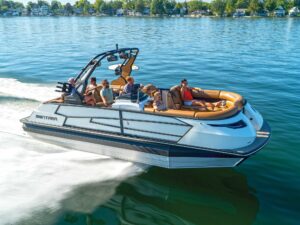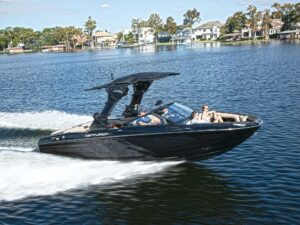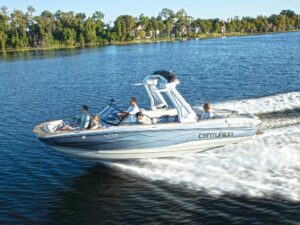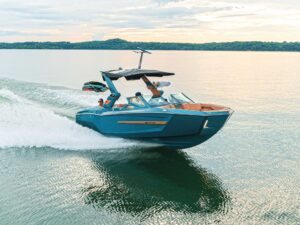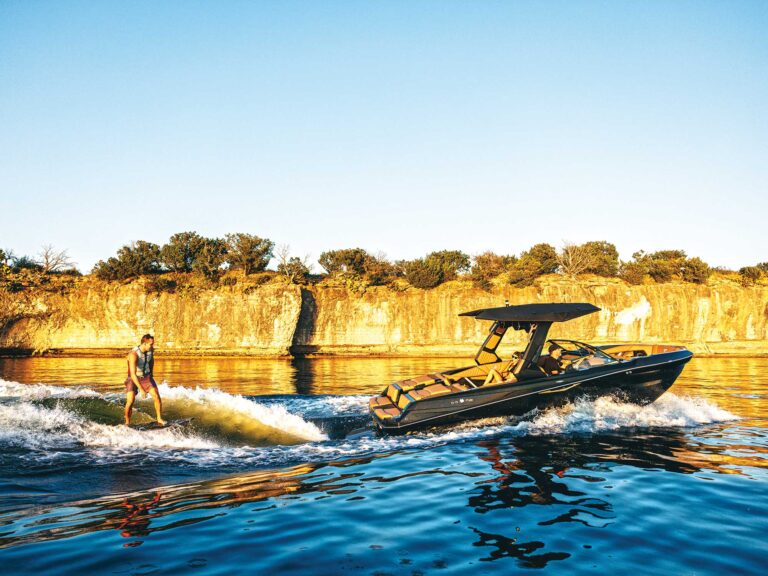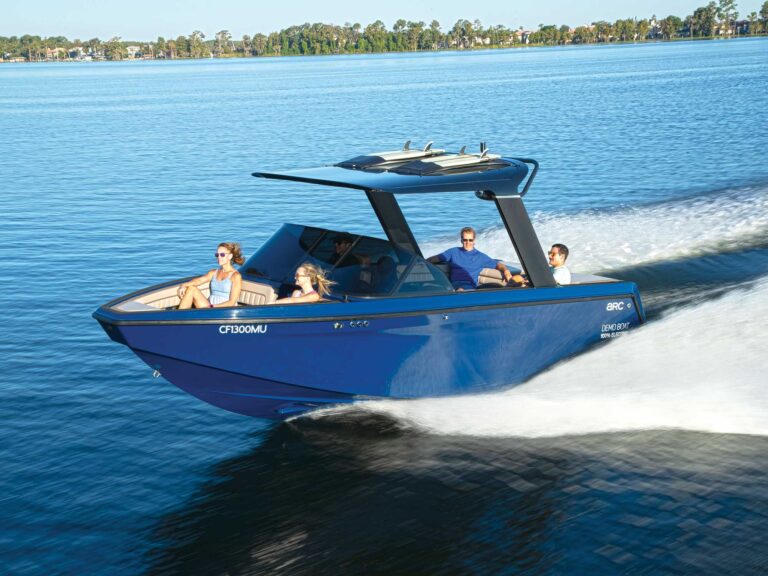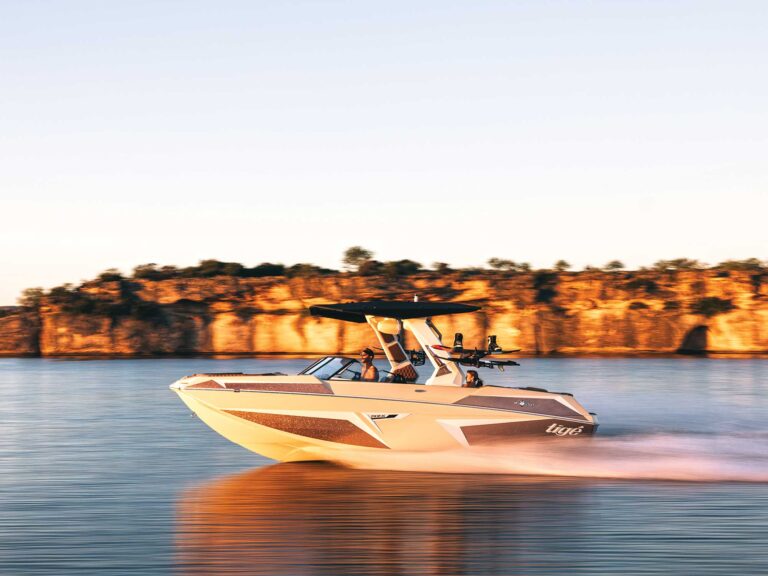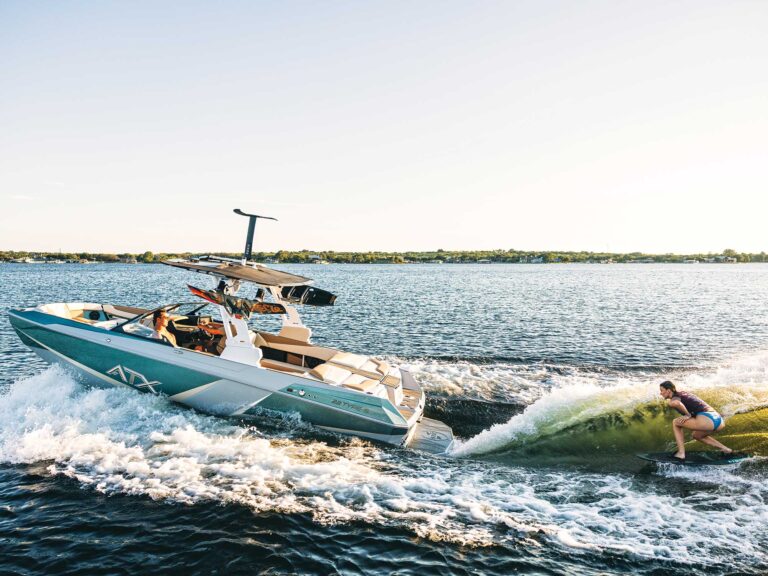
You’re on your way home, feeling the last warmth of the sun as it kisses the horizon, when the cellphone rings. A buddy, with his wife and three kids aboard, can’t get his motor started, and there isn’t a commercial towing vessel nearby. Consider this advice before offering a tow back to port.
Boat and Gear Limitations
Your cleats and lines may not be the floating, low-stretch lines and generously backed hardware found aboard towing vessels. Your alternative will be a strong, long anchor line to tow with and a pair of dock lines for a bridle (see illustration below). “Nylon line stretches more than half its length,” warns Capt. Clayton Tieman of TowBoatUS in Tampa Bay, Florida. “If something breaks, [the line’s] going to snap back and become a projectile.” Even while using a bridle, with dead weight pulling on one stern corner or the other, you should expect to turn your bow only 20 degrees at a time. Take it slow and steady, and anticipate heading changes well in advance.

A master or individual in charge of a vessel shall render assistance to any individual found at sea in danger of being lost, so far as the master or individual in charge can do so without serious danger to the master or individual’s vessel or individuals on board.
(2) Paragraph (1) does not apply to a vessel of war or a vessel owned by the United States government appropriated only to a public service.
(b) A master or individual violating this section shall be fined not more than $1,000, imprisoned for not more than two years, or both. Capt. Vincent Daniello
Approach
“If there is no emergency, don’t make one,” says Capt. Terry Hill of TowBoatUS in Potomac, Virginia. To buy time, anchor the disabled vessel. “Make a 360 around the boat and size up the situation, then back off and make a plan.” Communicate that plan, as well as an abort procedure, to everyone on both boats and get everyone into life jackets.
“We always try to approach with our bow into the wind or the current, whichever is prevailing,” Tieman says, although in some situations this isn’t possible. “You’re in command,” he stresses. Well-meaning advice from others might be based on handling a different boat than yours. “Whether it’s an I/O [sterndrive], or single outboard or twin inboard, you know your vessel. If you don’t deem it safe, don’t do it.” That might be the case with intoxicated or overbearing people aboard the disabled boat too.
Once the towing line is passed, maintain a safe distance while it’s secured. “Take up the towline slack very, very slowly. Just bump it in and out of gear,” Hill says, “and never, ever back down with that towline behind you.”

Underway
“Typical anchor lines are 100 or 150 feet,” Hill says. “That’s about the distance you want between boats for shock absorbency and safety in ideal conditions.” In close quarters, halve that towing distance. “The vessel you’re towing will turn inside of yours, so make turns wide around markers and docks,” he says, and plan far ahead. Tieman warns, “If you stop your boat, that boat behind you is going to keep coming.”
Wind or seas approaching small-craft-warning levels add significant stress on gear and skippers. “I’d much rather have the waves on the bow,” says Capt. Phil LeBlanc of TowBoatUS in Narragansett, Rhode Island. Towing in a following sea is particularly hard on lines and hardware, so the only safe course might be to an alternate harbor. Think about conditions along the route too. LeBlanc is most concerned when wind runs opposite a strong tidal current, which turns small swells into significant seas. Near Tampa Bay, Tieman knows nasty thunderstorms develop on most summer afternoons. Boat traffic is another big problem. “We can’t get 50-footers to slow down, and we’re on a bright red towboat with a flashing light,” Tieman adds.

A 45-minute cruise home at 30 mph becomes four or five hours when towing another vessel. “You’ve got to get yourself back home too. Are you going to have enough daylight and enough fuel?” Tieman asks. Expect to make just 6 mph, but assume you’ll burn as much each hour as your normal cruise consumption when not towing. You’ll also need food and warm clothes to stay out past dark.
Endgame
“For everyone, professional towers or good Samaritans, the highest anxiety occurs right near the dock,” Hill says. Approach a wide-open dock with your bow into the wind or current, if possible. Tie off your boat, and then bring the towed vessel in by hand.
Just because you could tow, doesn’t mean you should. “You’ve got to know your limitations,” LeBlanc says. “You’ve been out in the sun all day. You’re tired, hungry,” Tieman adds. “You don’t want to leave someone out there, but you have to make a judgment about your own condition and abilities.”
Options Instead of Towing
Federal law mandates that commercial and recreational boaters help anyone “at sea in danger of being lost, so far as the master or individual in charge can do so without serious danger to […] the vessel or individuals on board.” When towing isn’t practical, consider these options:
- Tow a short distance to a safer location, anchor the boat, and take everyone aboard your boat. Just check your boat’s capacity and bring along extra life jackets.
- Run in, buy a jug full of gas, or a new, charged battery or jump-start pack, and head back out.
- On lakes without commercial towing vessels, check with BoatUS 24/7 dispatch (800-391-4869) or local law enforcement. This isn’t the first breakdown on that lake, and they’ll know whom to call.

